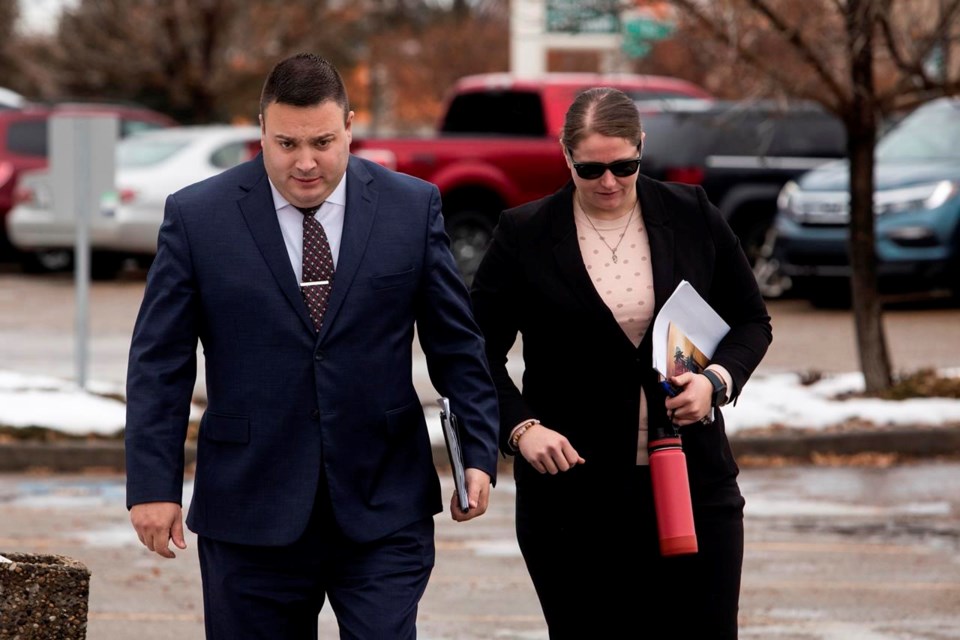EDMONTON — The defence lawyer for an Alberta Mountie charged with manslaughter says his client was doing her job when she fired shots at a man that she thought was the suspect of a shooting the day before.
Const. Jessica Brown and Cpl. Randy Stenger are accused in the fatal shooting of Clayton Crawford on July 3, 2018, near Whitecourt, Alta., about 180 kilometres northwest of Edmonton.
Brown's lawyer, Robb Beeman, says evidence from the medical examiner and a ballistics expert shows the bullet that killed Crawford came from Stenger's pistol.
Jurors heard last week that Brown fired her carbine rifle eight times, Stenger shot his pistol four times, and Crawford ultimately sustained 10 gunshot wounds.
Whitecourt RCMP were notified about the sighting of a purple pickup truck at a rest stop that was seen fleeing the area of a shooting the day before near Grande Prairie, Alta.
Over the last two weeks, court heard there was confusion about whether its driver was considered a target or suspect in that shooting.
Brown acknowledged in her testimony that she fired shots at Crawford when he attempted to flee after he was approached by armed officers wearing hard body armour on July 3, 2018.
"She was doing her job," Beeman told the jury in his closing argument Thursday. "A job that she knew she wanted to do since she was a young child."
Earlier in the trial, Brown testified that she wanted to be a Mountie since she was six years old when she saw officers wearing their red uniforms on horseback at a parade.
"Consider her fear when she heard that truck start, engine roaring," Beeman said. "Would common sense dictate that they would do anything else?"
Beeman said that although the court has the luxury of looking at video footage of the shooting, Brown and Stenger did not have the hindsight at the time to act in any other way.
"She had to make critical, split-second decisions in real time," Beeman told the jury. "They needed to act."
The jury heard that when Brown and Stenger approached the truck, it appeared as though the man in the driver's seat was sleeping.
Brown testified she saw Crawford reach between his legs. A third officer broke the driver's window with a baton and there was a struggle to get Crawford's hands in sight, court heard.
Brown said Crawford started the truck and began driving backward. She said she thought he was using the truck as a weapon and she feared for her life and the lives of her colleagues.
"She discharged her firearm for the purpose of protecting herself and her colleagues," Beeman said.
"You don't need to be a police officer to understand that that's threatening."
At the beginning of his closing argument, Beeman emphasized that Brown and Stenger acted independently.
For the first time since the start of the three-week trial, the courtroom was packed with relatives of Brown, Stenger and Crawford.
This report by The Canadian Press was first published Dec. 8, 2022.
____
This story was produced with the financial assistance of the Meta and Canadian Press þ£ƒÃ…Á«¯ Fellowship.
Angela Amato, The Canadian Press



